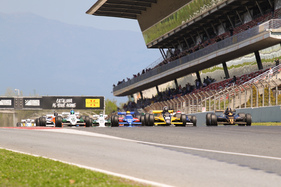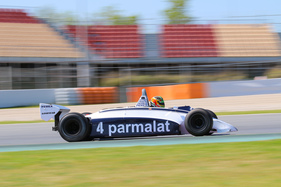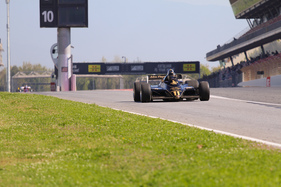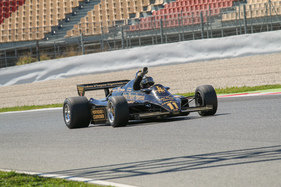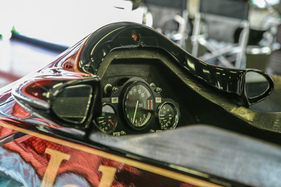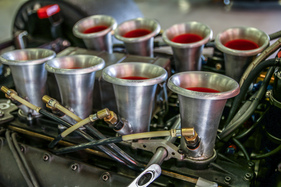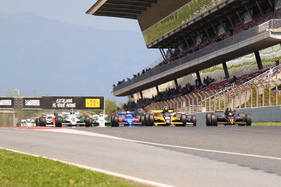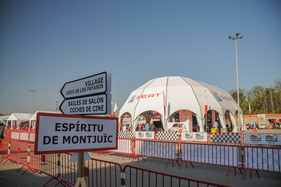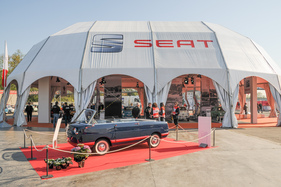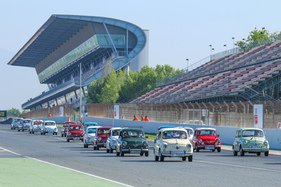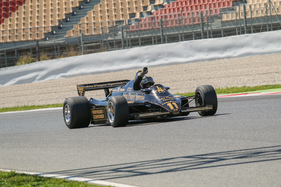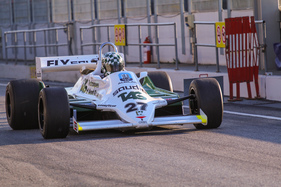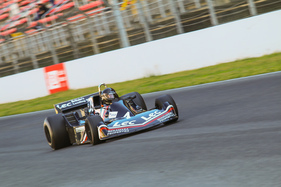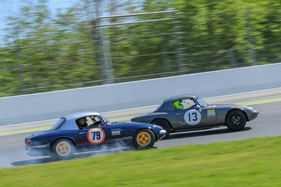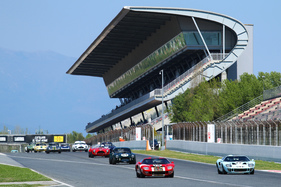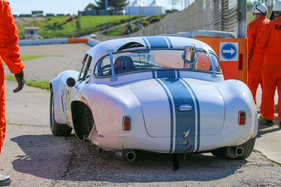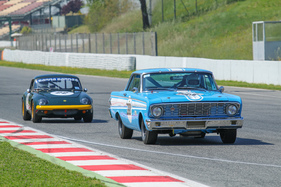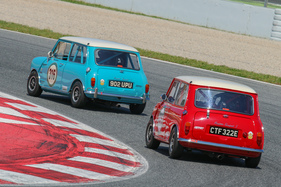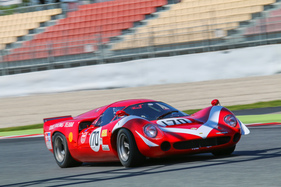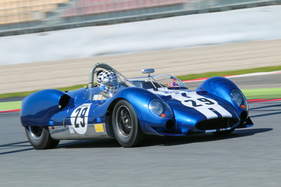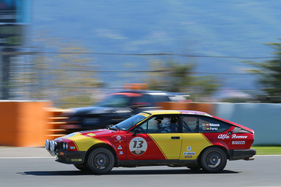The "Espíritu de Montjuïc" event is to the Spanish what the AVD Oldtimer Grand Prix is to Germany and the Silverstone Classic is to the UK. The event commemorates the Montjuïc circuit, which hosted four rounds of the Formula 1 World Championship between 1969 and 1975.
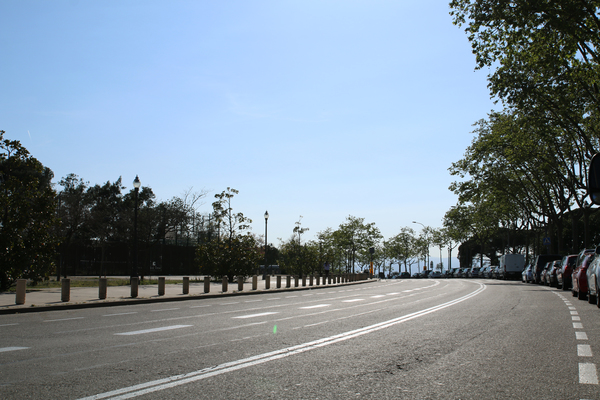
The circuit in the south of Barcelona was considered to be extremely demanding, not to say extremely dangerous, due to the fast bends and jumps, which are atypical for city circuits.
As a result, the premier class switched to the race tracks in Jarama and Barcelona, and the revival event for historic racing and road cars took place on the modern Circuit de Catalunya on April 7-9, 2017.
Manageable field of racing cars
Around 130 vehicles were registered for various circuit races on this circuit, and there was also an extensive supporting program with attractions and exhibitions. The FIA Masters Historic offered an international starting field with four series, but national series were also represented with the Targa Iberia (Spain) and the NKHT (Dutch Championship for Historic Touring Cars).
Folk festival character
To characterize the Montjuïc event, it can be compared to the AvD Oldtimer Grand Prix at the Nürburgring. There is a virtually all-day program on the track and the most diverse categories of racing cars are constantly on the road. The event in Spain has a completely different character. Visitors are greeted by music from the sixties and seventies as soon as they enter the paddock in the morning.
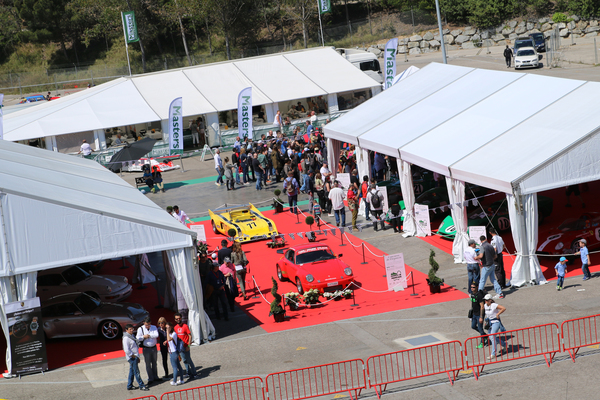
With actors in period outfits and countless performances of live music, an atmosphere is lovingly created that makes visitors feel as if they have been transported back in time.
In contrast to the AvD OGP, there are many more families with small children in the paddock, as the event also offers something for small children, e.g. bumper cars, large bouncy castles and a carousel, as well as a circus tent with countless performances. The program included magic shows, puppet shows and even a tribute show to "Los Payasos de la Tele", three extremely popular TV clowns in Spain who performed together from 1939 to 1983.
So on the second weekend in April, the children were well entertained, but the adults didn't miss out either.
Among other things, a collection of famous movie vehicles was on display, including examples such as a Mini Cooper from "The Italian Job" from 1969 or the DeLorean from "Back to the Future". There were also dance events, a Concours d'Elegance and the Spanish car manufacturer Seat presented important milestones in its history in a large tent. This varied and carefully compiled "supporting program" was able to attract and inspire many spectators, which is why the paddock was always well attended.
For some visitors, the "supporting program" was even more important than the races, an effect that is certainly not the case at the Nürburgring.
Best weather conditions
The weather was typically very sunny for Spain, with a clear blue sky. Early in the morning, it was still relatively fresh at around eight degrees Celsius, but as soon as the sun rose, temperatures climbed up to 24 degrees.
Well attended
The crowds were considerable, although exact visitor numbers are not available. In any case, the paddock was always well frequented. The grandstand in front of turn 10 was also usually quite full and there were always a few spectators on the railings on the roof of the pits. The remaining grandstands, especially the main grandstand on the start-finish straight, were largely unpopulated, which was perhaps the organizer's plan.
60 years of Seat
On the occasion of the sixtieth anniversary of the Seat 600, a parade was organized in which countless vehicles of this vehicle type, which is hardly known in our country but is similar to the Fiat 600, took part.
On Sunday, after the final races, all spectators were given the opportunity to take part in a parade around the track with their classic car. However, this was not free of charge, as tickets had to be secured in advance.
Formula 1 almost like back then
One of the main attractions was certainly the two races as part of the Masters Historic Formula One Championships with Formula 1 cars from 1972-1983. Divided into three eras, they completed two 25-minute races. The weekend was dominated by Michael Lyons in the 1980 Williams FW07B. After securing pole position in qualifying, he took a commanding lead in the first race on Saturday before having to pit after six laps due to a technical defect (broken throttle cable) and retiring. Gregory Thornton inherited the victory in the Lotus 91-5.
In the second race on Sunday, Lyons was spared technical problems and won in commanding style.
An interesting entry here was the LEC CRP1. This car from the British team LEC Refrigeration Racing was designed for the 1977 Formula 1 season and was used in five rounds of the F1 World Championship. With a 13th place as its best result, the car was never convincing in terms of results, but it achieved a rather unwanted prominence in other ways. In pre-qualifying for the British Grand Prix, the accelerator pedal jammed and the resulting impact with the track boundary exerted forces of 179.8 G on driver David Purley. For a long time, this was considered the highest G-force load that a person could ever survive - Purley "only" suffered several broken bones.
One of the two LEC CRP1s built took part in the Spirit of Montjuïc races, but also without any notable success.
Three-hour race
As the name suggests, the Masters Three Hours was an endurance race over 3 hours. GT cars from the sixties (pre-1966) competed here, in particular several Ford GT40s, Shelby Daytona Coupés and AC Cobras. Other GT cars such as the Jaguar E-Type and Lotus Elan were also represented, but overall the starting field was quite small with fewer than 20 cars.
A curious scene occurred on one of the first laps when a Lotus Elan braked on the approach to turn 1. The car was unable to decelerate sufficiently and hit the car in front on the rear at the entrance to the corner. Normally, in such a situation, the car in front spins away while the driver who caused the accident gets through without any major problems. In this case, however, the car in front, the Lotus Elan #13, was able to catch the drift with a great driving performance and thus avoid the spin. Instead, the car that caused the accident spun and came to a halt on the grass against the direction of travel.
The two Ford GT40s that had started at the front also dropped to the back of the top ten right at the start. They were only able to fight their way back as the race progressed and ultimately one of the "usual suspects" won again.
An AC failed in a rather unusual way towards the end. First a single tire bounced through the bend, followed a moment later by the sports car on three wheels. The driver had to park the vehicle at the nearest emergency exit. Apparently, the tire and rim had come loose and become independent.
Historic touring cars from the Netherlands
Two races with cars similar to those in the Masters Three Hours faced each other in the two races for the Dutch Championship for Historic Touring Cars (NKHT). At the front, several Lotus Elan cars managed to decide the victory among themselves, even though they were up against more powerful cars with significantly more displacement.
The midfield was also very interesting, consisting of no fewer than ten (Austin) Mini Cooper S cars, which were opposed by a whole fleet of American muscle cars, above all the Ford Mustang. In the races, there were many duels between the agile Minis (David) and the massive and muscle-bound Americans (Goliath).
This unequal duel offered the spectators great entertainment and was the secret highlight of the event for many observers.
Long-distance racers in a clinch
The Masters Historic Sports Car Championship was contested by racing cars/sport prototypes from groups 4 and 5 from the years 1962-1974. Lola T70s made up the majority of the starting field, although open-top prototypes such as a Chevron B19 were at the front. The one-hour race offered plenty of excitement, with the Lola T70s, which were leading their class, constantly shifting places.
An interesting splash of color was the Cooper Monaco King Cobra. This was an open prototype developed in 1963 by two masters of their trade, John Cooper in cooperation with Carroll Shelby, for the Can-Am racing series. In addition to its elegant design, the car featured a Ford V8 mid-engine and rear suspension taken directly from the Cooper Formula 1 car. Unsurprisingly, the car, of which six were built, was able to clinch victories in the Can-Am.
At the end of the 1964 season, Ford finally motivated Carroll Shelby to turn his focus to the development of the GT40 - the remaining King Cobras were then sold to private individuals for $3000 each and the program was discontinued.
In the 60-minute race on the Catalunya Circuit, it was enough for class victory and eighth place overall.
Uniformity too
Finally, the Targa Iberia Classic series made its appearance on Sunday. At the start were mainly road-legal classic cars that drove according to uniformity regulations. The drivers were required to adhere to a specified lap time and deviate from it as little as possible. This meant that every car had the same chance of winning.
However, with few participants and the lack of duels for positions, this series was hardly able to captivate the spectators and therefore offered a somewhat dull conclusion to the racing action.





















































































































































































































































































































































































